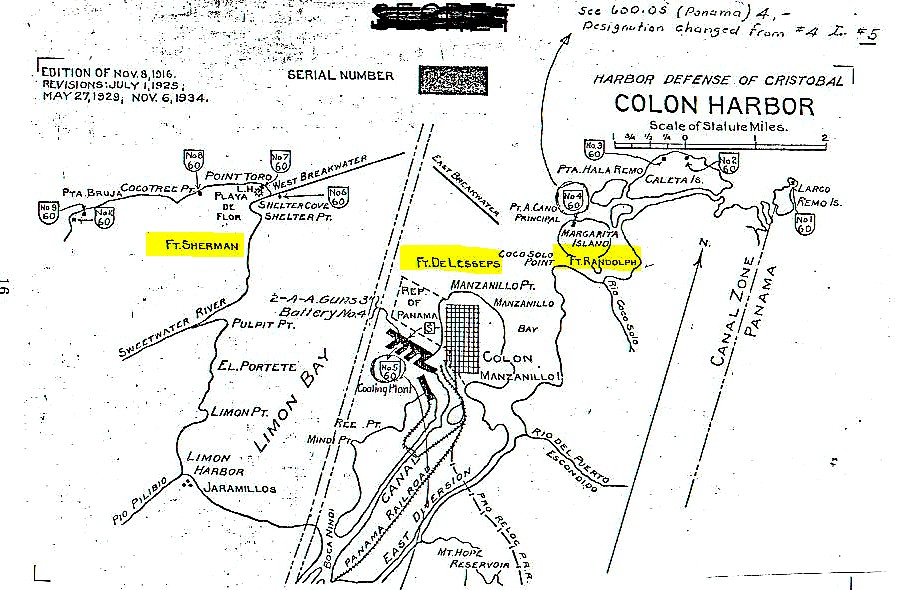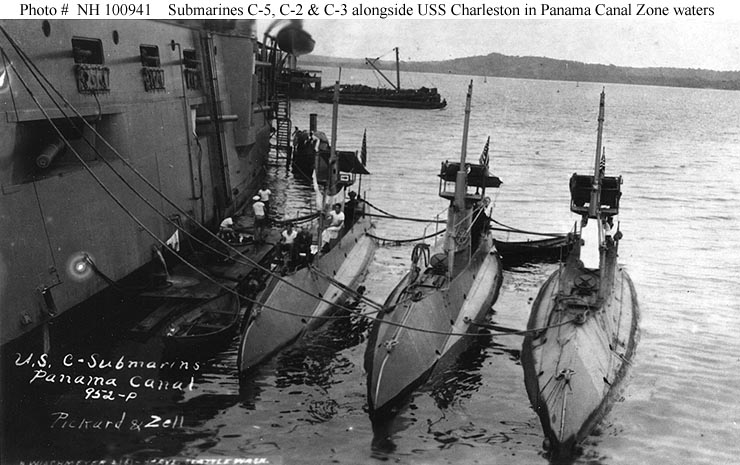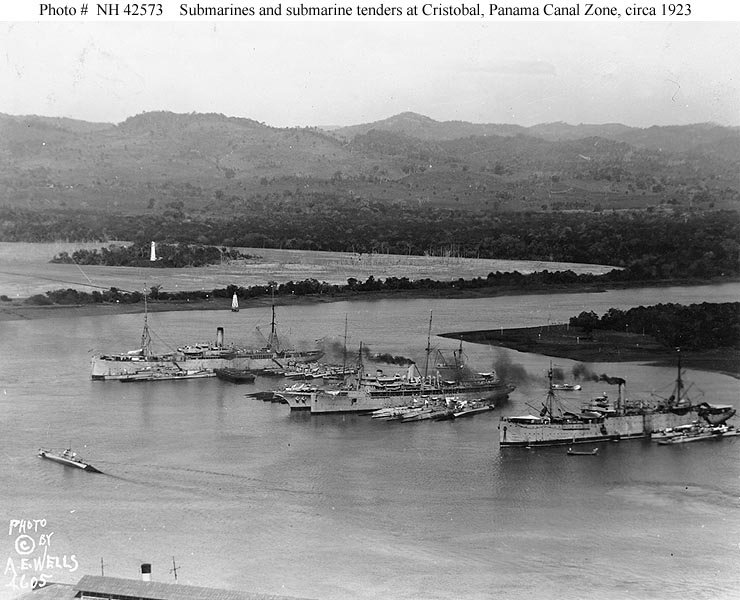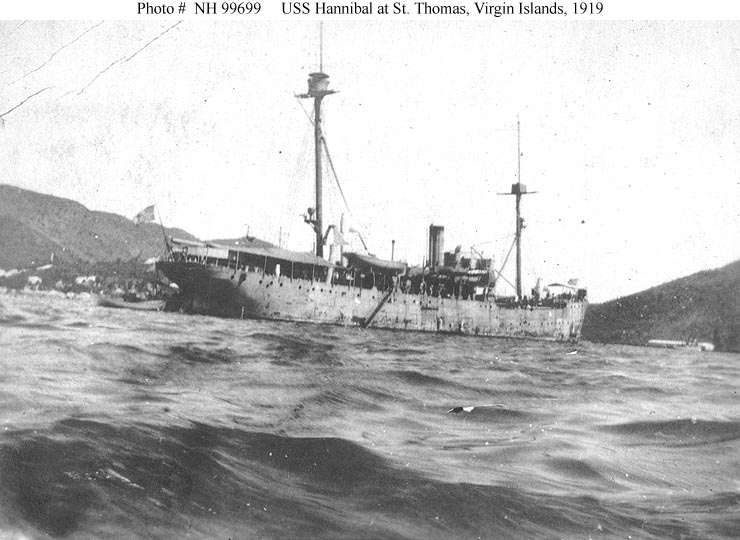Deployments - The Early YearsThe Panama Canal Zoneapproaches and sea lanes | ||
| | ||
| After the French efforts to build the Panama Canal failed - the United States bought the French equipment and interests in the canal - and made tremendous investments in the project - and was the largest single project undertaken by the United States to that time. This investment was made on the basis of potential economic and defense benefits for the country . Having a passage through Panama that reduced the transit time between Pacific and Alantic ports by as much as 20 days could make the United States more competitive in world trade; as well as providing a much faster response to any world event in which the United States wished to respond with Naval forces. As the work on the canal neared completion - and the investment grew considerably - eventually to some 352 million dollars - an investment the United States needed to protect from any posible hostile action. At this time - Submarines were considered primarily a coastal defense force - not useful for much else - so like the forces sent to the Asiatic Station to "show the flag" - in 1913 five C Boats (Octopus, Stingray, Tarpon, Bonita, and Snapper) were deployed to Coco Solo - of course with tenders. As we are all aware - DANFS contains error and omissions. With regard to this deployment by so many ships - DANFS is nearly silent - in fact is silent in several respects.
| ||
 | ||
| 1916 Map (with later revisions) of the coastal defenses of Cristobal and Coco Solo | ||
 | ||
| CHARLESTON served as tender at Cristobal, C.Z., from 7 May 1916, until the outbreak of W.W. I in 1917. | ||
| For the next 5 years - submarines patrolled in and around the Canal Zone operating from the tenders Ozark, Severn, Tallahassee and Charleston - until the Submarine Base at Coco Solo became operational in 1918. Even with the base - Tenders played a significant continuing role in Canal Zone defense - as this photo from 1923 shows: | ||
 | ||
| ||
| In addition to the Canal Zone proper - submarines patrolled the Carribean and Gulf of Mexico - operating from Tenders stationed at Ponta Delgada, San Miguel, Azores (Bushnell and Tonopah), Bermuda and the Virgin Islands (Tallahassee, Alert, Hannibal and Tonopah) and Gauntanamo, Cuba (Rainbow). | ||
 | Panorama Photo of Holland with Submarines of Submarine Division 19. In the center group are (from outboard): S-46 (SS-157); S-47 (SS-158); S-44 (SS-155); and an unidentifed boat. Outboard submarine in the group astern is S-45 (SS-156). | |
| These early days wouldn't be the last the Canal Zone would see of the Tenders - W.W. II again brought the need to better protect the Canal - but this time the stronger threat seemed to come from the West - rather than East as it had in W.W. I. As important to shipping as the Canal itself - access to the canal was made an equal priority - with defensive assets cruising around the sea lanes to and from the Canal. The Virgin Islands, Bermuda, Cuba, even the Azores were regular hosts to tenders and their fleets of submarines.
 | ||
| Go Back to Deployments - The Early Years Philippines and Asiatic Station | Continue on to Deployments - Norfolk | |
| Return to TenderTale Main Page © 2006 Common Cents Computers | ||